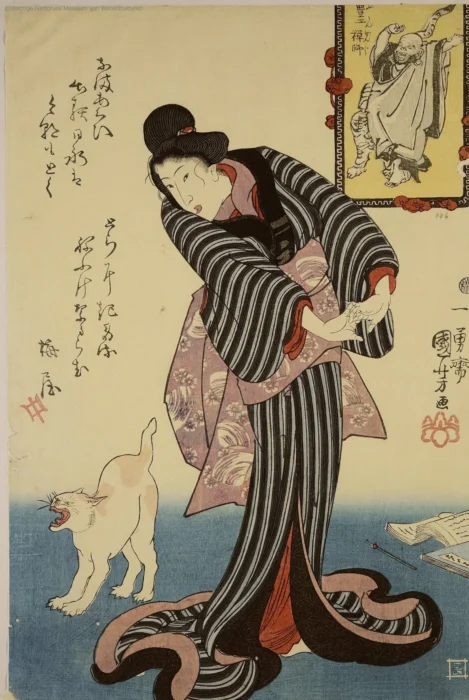If you’ve ever felt like cats were secretly in charge of the internet, just wait until you meet Japan. The country’s obsession with all things feline didn’t begin with Hello Kitty and certainly doesn’t end with her immaculately whiskered face stamped across lunchboxes, bullet trains, and limited edition soy sauce packets. No, Japan’s love for cats goes back centuries to superstitions, street corners, and one very whisker-forward island.
Let’s start with the mikeneko – the classic calico house cat often thought to bring good fortune. In Japan, a mikeneko isn’t just a pet, it’s practically a furry financial advisor. Maneki-neko, the iconic beckoning cat, is found in countless shops, restaurants, and probably your aunt’s kitchen – paw raised in eternal welcome and low-key capitalist charm. Westerners might hang up a horseshoe for luck, but Japan prefers a cat with better aesthetics.
Then came Hello Kitty in 1974, the bow-wearing ambassador of all things cute, mute, and mysteriously British. Originally designed by Yuko Shimizu, she turned into a global icon with no mouth but a million licensing deals. For decades, she’s been quietly conquering the world, one pink pencil case at a time. Meanwhile, Western cartoon cats like Garfield were busy complaining about Mondays and lasagna. The cultural contrast is… notable.
But perhaps the most purrfect (sorry) symbol of Japan’s feline devotion is Tashirojima, better known as Cat Island. Located off the coast of Miyagi Prefecture, this island has more cats than people, and frankly, the cats run the show. Originally introduced to handle the mice population threatening the local silkworm industry, they soon climbed the ranks of society. Now, they live like retired celebrities, lounging in sunbeams while tourists bring them treats and pose for selfies.
Tashirojima isn’t just a cat lover’s dream, it’s a furry slice of Japan’s deeper cultural relationship with nature, mystery, and low-key spiritual symbolism. Cats in Japanese folklore have long been seen as protective, mystical, and occasionally shape-shifting. In contrast, Western superstition mostly involved blaming cats for things like witches, crop failures, and anything vaguely suspicious. In that sense, Cat Island isn’t just a curiosity, it’s a quiet rebellion against centuries of feline defamation.
So whether you’re into fluffy omens of fortune, mouthless icons of cute, or real-world kitty communes, Japan has you covered. Just remember, while the cats of Tashirojima may look adorable, they also know they’re in charge. And honestly, wouldn’t you be too if an entire island bent to your whiskered will?
Two Cats by Utagawa Kuniyoshi (ca. 19th century)
Author’s Note:
No cats were bribed, flattered, or fed premium tuna during the writing of this article, though I may have whispered “Who’s a good lucky neko” to a passing tabby for inspiration. As always, proceed with caution around Cat Island. You may think you’re visiting them, but let’s be honest. They’re evaluating you.


Leave a Reply